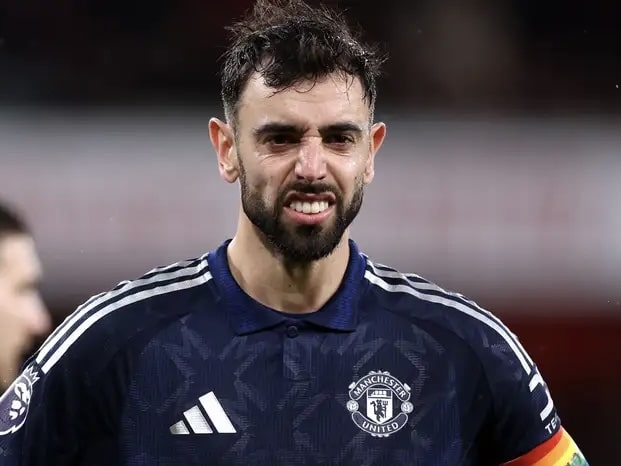
When Fernando Llorente bundled the ball into Manchester City’s net during that frantic 2019 Champions League quarter-final, few could tell what they had just seen. The ball appeared to brush his arm before crossing the line, prompting a lengthy VAR check that ended with the goal standing. Tottenham advanced, City were eliminated, and the debate has never stopped. For some, it was handball by the letter of the law; for others, it was a fair goal judged in context. That moment summed up football’s long-standing problem, the same incident can produce two perfectly valid yet opposing interpretations.
Handball has become football’s most inconsistent decision. Every season brings new flashpoints, new rewrites, and the same old confusion. What was once a relatively simple rule, punishing only deliberate handling, has become one of the most rewritten and least understood parts of the game. Players and fans no longer know what to expect; even referees interpret the same scenario differently depending on the competition or the guidance they have been given that week.
Since the introduction of VAR, lawmakers have tried repeatedly to remove this uncertainty. The rule has been reworded, diagrammed, and clarified, yet each revision creates another contradiction. What used to be a matter of common sense is now a matter of millimetres and semantics. In trying to achieve total consistency, football has instead created a system that produces the opposite, endless inconsistency born from over-definition.
The conundrum lies in football’s attempt to legislate two ideas that resist clear definition, intent and natural position. Every time the law tries to fix one, it undermines the other. The result is a law that looks objective on paper but remains chaotic in practice.
For decades, handball was judged by one principle: was it deliberate? Referees assessed whether the player moved their hand toward the ball, not the other way around. If the contact seemed accidental, a deflection, a ricochet, a close-range reaction, play continued. It was a simple framework that relied on human judgment and accepted a degree of subjectivity.
In this era, inconsistency existed, but it was tolerable. Referees differed in interpretation, yet decisions were guided by football logic, players knew that only clear, intentional handling would be punished. The law was not perfect, but it aligned with instinct. It allowed for context: a defender blocking a cross from two metres away was rarely guilty; a striker using an arm to control the ball was.
This balance began to erode with the rise of television replays and VAR. Slow motion exposed every minor contact, making the old reliance on intent seem vague and outdated. What was once accepted as “part of the game” now looked, frame by frame, like a possible offence.
In 2019, lawmakers attempted to restore clarity by shifting focus from intent to consequence. Instead of asking whether a player meant to handle the ball, referees were told to judge whether the arm made the body “unnaturally bigger.” If so, any contact would be penalized, regardless of intent.
On paper, this seemed more objective. In practice, it introduced a new kind of inconsistency. What counts as “unnatural”? A defender sliding to block a shot? A player jumping with arms raised for balance? The law tried to remove interpretation but simply moved it elsewhere, from the player’s mind to the geometry of their body.
The result was a spike in penalties for minor, unavoidable contacts. Balls that brushed arms from point-blank range suddenly led to spot-kicks. In trying to standardize judgment, football replaced discretion with rigidity, but without clear boundaries, referees still made opposing calls in similar incidents.
The Llorente goal, revisited with this new wording, might have been disallowed. Yet under the rule at the time, it stood. That, in essence, is the heart of the handball debate: the rule changes so frequently, and is applied so inconsistently, that the same play could yield a different outcome in another season, or another competition.
The biggest source of confusion is the idea of a “natural” arm position. Football, by nature, involves constant movement, players run, jump, twist, and slide in ways that make a fixed definition impossible. When a defender leaps to head a cross or braces for a fall, their arms instinctively extend for balance. Yet what feels natural to the player may look “unnaturally bigger” on replay.
Lawmakers have tried to codify the issue through diagrams and reference points, introducing concepts like the “armpit line” to decide where the arm legally begins. But the attempt to standardize a fluid, athletic motion has failed. What’s “natural” for a winger tracking back isn’t the same for a centre-back blocking a shot. Instead of clarity, referees are left to interpret geometry in real time, and VAR only magnifies the uncertainty with slow-motion replays that make every movement look deliberate. This is the rule’s first paradox: it demands objectivity from a situation that cannot be measured objectively.
The second paradox lies in intent, the very concept football tried to remove. Even after shifting focus toward consequence, lawmakers have repeatedly had to reintroduce intent-based language, especially for attacking handballs.
If a goal results from any hand contact, even accidental, it is ruled out. Yet for defenders, context suddenly matters again, proximity, reaction time, and the speed of the shot are all considered. This selective use of intent reveals that the concept can never be fully erased. The rule tries to exclude it in one phase of play while relying on it in another.
Officials are now forced to make layered judgments: was the arm in a natural position? Was it close range? Did the player have time to react? Did the contact create an advantage? These micro-decisions turn what should be a clear law into a sequence of competing interpretations. The irony is clear in that, in trying to remove human subjectivity, the modern handball law has only made it more visible.
Nowhere is the inconsistency clearer than in the rule disallowing any goal where the scorer or assister accidentally handles the ball. The intention was to remove unfair advantage, but its execution created absurd outcomes, legitimate goals cancelled for minor, unavoidable touches.
Two identical incidents can yield opposite results: a defender’s accidental handball in the box might go unpunished, yet a striker’s identical contact seconds before scoring will see the goal disallowed. The logic behind one rule contradicts the other, producing outcomes that feel inconsistent with both fairness and footballing sense.
From Fernando Llorente’s goal against Manchester City to more recent VAR controversies in domestic leagues like the Aurelien Tchouameni one in the Clasico that took place at Montjuic last season, handball incidents now dominate post-match discussions. The same gestures, an arm raised, a ball deflected, can lead to a penalty one week and play-on the next. These flashpoints aren’t isolated mistakes but symptoms of a rule that invites conflicting interpretations.
In the Llorente case, the referee decided the ball came off his hip before brushing his arm, allowing the goal to stand. Under newer interpretations, that same contact might be deemed “unnaturally bigger” and therefore disallowed. The incident perfectly exposes football’s central inconsistency: the rule itself keeps changing faster than the game it governs.
Modern defenders now adapt their body shapes not to block shots but to avoid potential penalties. Players routinely jump with arms clamped behind their backs, compromising balance and technique. It’s a visual symbol of the rule’s distortion, footballers adjusting not to opponents, but to refereeing uncertainty.
This hesitation changes the rhythm of defending. Where instinct once guided reactions, caution now dictates movement. The law, intended to make the game fairer, has instead altered its natural flow.
VAR was meant to ensure accuracy, but its presence has magnified inconsistency. Slow motion isolates split-second actions, making involuntary reflexes appear deliberate. Marginal calls that would once be forgotten now become decisive, as the law’s ambiguity meets forensic technology.
The result is a version of “correctness” that often feels unjust. A technically correct decision can still be wrong in spirit, punishing players for movements that are simply human. In trying to standardize interpretation, VAR and the current wording have made the game less predictable and more detached from common sense.
Handball in football remains the sport’s most inconsistent law. Every revision, from intent-based rules to the “unnaturally bigger” criterion, has aimed to create clarity, yet identical incidents continue to produce opposing outcomes. Players adjust their movements, defenders act cautiously, and VAR magnifies every split-second contact, highlighting the contradictions inherent in the law. Until football accepts that human movement cannot be rigidly codified, handball decisions will remain unpredictable, leaving fans, players, and officials perpetually debating the same moments, the conundrum proving that consistency in theory often clashes with fairness in practice.








